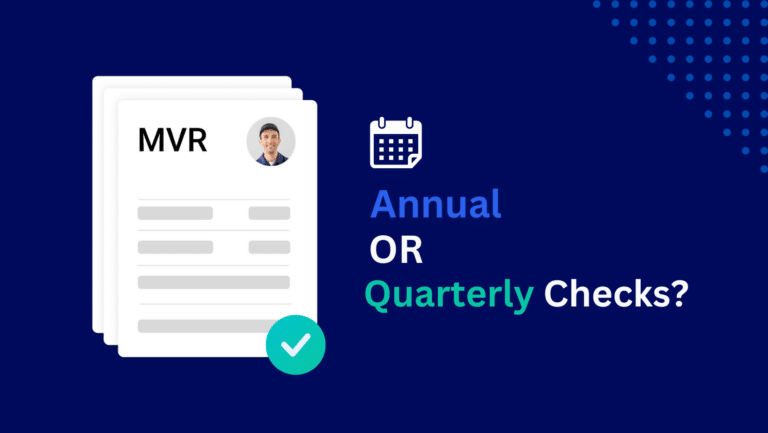3 To-Do’s When Monitoring Employees’ MVRs

Are you ready to simplify your driver record management with MVR monitoring? Get a head start with these three important to-do’s.
1. Differentiate Between Checking and Monitoring MVRs
Pre-hire Motor Vehicle Record checks are a good starting point when deciding who is initially qualified to join your team. However, initial checks don’t speak for the future. Driving records can change at any time, and so can employees’ driving status. How and when you find out depends on this question: Are you checking or monitoring your employees’ records?
Pulling your employee’s MVRs annually or biannually doesn’t mean you are actively monitoring them. Let’s look at a real-life example. When going to the doctor for a checkup, you first learn how things are going. Then, you get a diagnosis. If your doctor sees something unusual, your health will be monitored to prevent further complications.
This applies to your fleet. Checking your drivers’ records periodically leaves room for unnoticed violations, invalid licenses, and unseen risky driving patterns. For comparison, when you monitor your employee’s records, you are doing it continuously over a period of time— from new hire throughout employment. Monitoring involves tracking and using real-time driver data. This enables you to make proactive decisions on who is legally allowed to be driving for the company. It also prevents negligent situations.
2. Understand MVR Violations and Points
Each state’s motor vehicle department classifies, processes, and penalizes violations differently. As a result, this can become a challenge for companies with drivers across the U.S. MVR reviews take time and knowledge to understand and interpret the state’s reporting language.
Each state has its own laws surrounding license suspensions and what is grounds for one. Common reasons include driving under the influence, reckless driving, point accumulation, unpaid fines, and failure to pay child support.
Reviewing your employees’ driving records also requires understanding how infractions impact your company’s safety policy and their ability to perform the job. MVR Monitoring technology simplifies the driver record review process. Drivers are automatically scored based on risk level and any new violations are flagged and decoded. This can help your team save time and eliminate human error when determining driver eligibility.
3. Identify and Correct Unsafe and Risk Behavior
Your role doesn’t end with knowing violations exist. Mitigating driver risk involves identifying the root cause and tackling the issue. An MVR report with violations like texting while driving or running a stop sign may indicate that drivers are distracted on the road.
Knowledge is power. Gaining insight into your drivers’ behaviors can help streamline the time and effort spent trying to correct risky driving behaviors. MVR Monitoring works as a solution to monitor driving behavior while improving deficiencies with driver training.
Want to learn more about MVR Monitoring vs. Annual MVRs? Download our Case Study or contact us to schedule a demo.
*We are not lawyers. Consult with your legal counsel to ensure your processes and procedures meet/ or exceed safety standards and compliance regulations. Please read our legal disclaimer.






